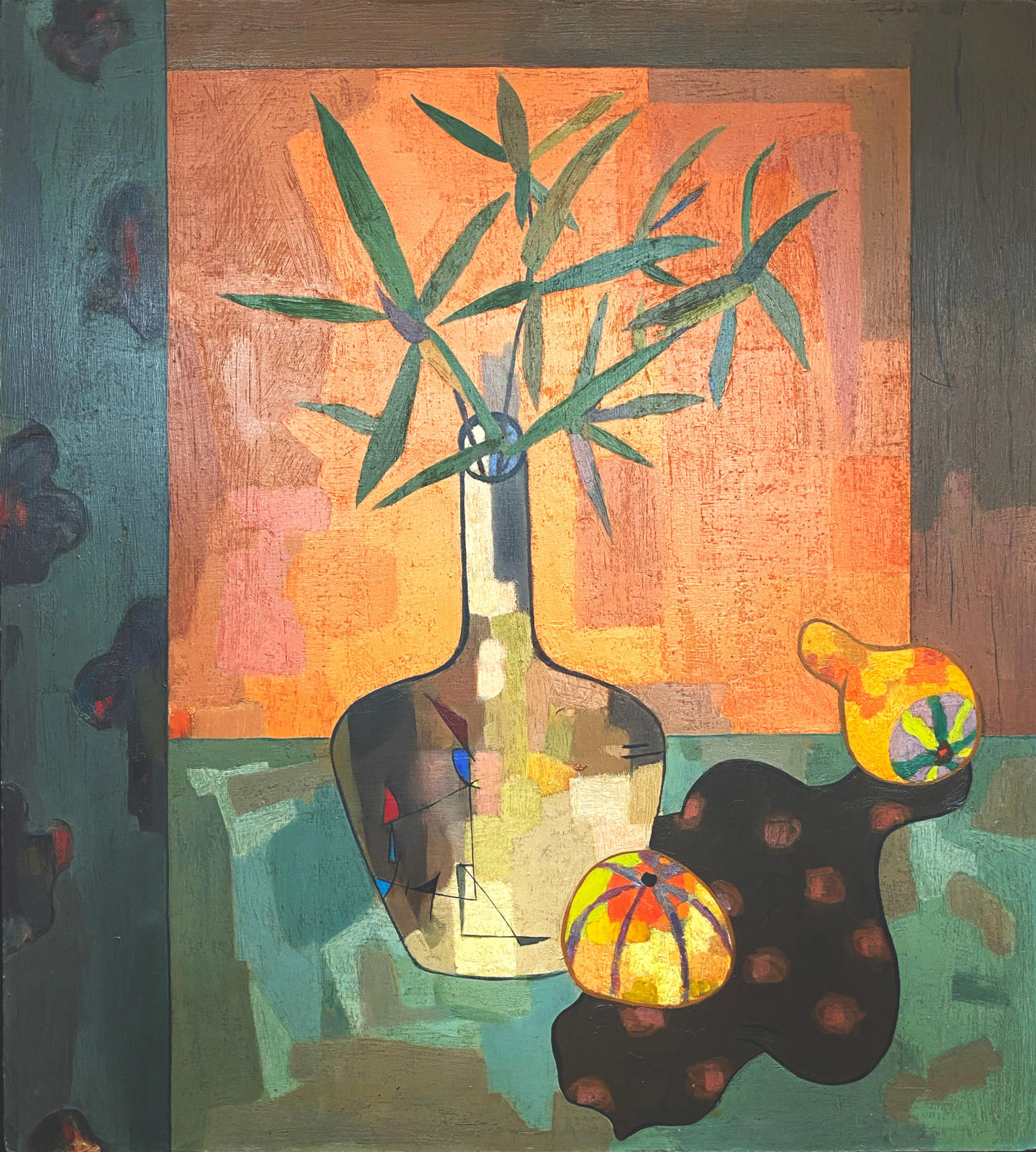











Framed: 34 1/2 x 31 1/2 inches
artist
1961 marks a pivotal moment in Totten’s career, departing from the subdued desert-inspired color palette that had characterized his previous work to embrace a more flamboyant and adventurous aesthetic, embarking on a creative exploration that resonated with the buoyant spirit of the era. This marked shift coincided with Totten’s deepening engagement with Synchromism, a movement spearheaded by Stanton MacDonald-Wright, under whose tutelage Totten had studied. Drawing inspiration from MacDonald-Wright, Totten absorbed the foundational principles of Synchromism, yet he always approached them as a catalyst for his own distinctive artistic vision.
Totten’s artistic process appears deceptively effortless, mirroring the demeanor of the man behind the brush. Modest, soft-spoken, and gentle, Totten embodied humility in his approach to his craft. Yet, beneath this unassuming exterior lay a profound commitment to his artistry. Immersed in the act of painting, Totten dedicated himself wholeheartedly to his practice, infusing each canvas with a palpable sense of daring and conviction.
To liken Totten’s oeuvre to that of luminaries such as Clifford Still or Edward Dugmore may seem audacious at first glance, however, upon closer examination, one discerns a shared mastery of abstract expressionism and a profound depth of artistic expression. Totten stands shoulder to shoulder with these titans, his capacity to produce profound abstract works attesting to his enduring legacy as a visionary artist.
Description
This painting from the 1940s exemplifies Totten’s early exploration of color and form within an observation-based composition. Rich, earthy palette of gourd-like hues that permeate the composition, establish a subconsious connection to the natural world.
In his early still lifes, Totten often introduces a framing device — what might appear as a simple border — though works to elevate an ordinary scene into something more introspective and self-contained, pushing the viewer to reconsider the space within the frame and serves to set it apart from its historic predecessors.
Pattern plays a significant role in this painting. The spotted cloth on the tabletop and the distinctive line-and-color motifs on the vase are not mere decorative elements, but integral parts of the composition, contributing to its rhythmic balance. The patterns evoke a sense of abstraction, drawing on the influence of artists like Kandinsky, whose use of line and color sought to transcend the literal and engage the viewer on a more intuitive level.
Totten’s application of paint further heightens the sensory experience. Using a dry, dragging technique, he builds actual texture across the surface of the canvas, enhancing the implied texture of the natural elements depicted. This tactile quality invites the viewer to not only observe the forms but to almost physically feel them, adding a layer of depth that connects the visual and the material, the real and the imagined.











